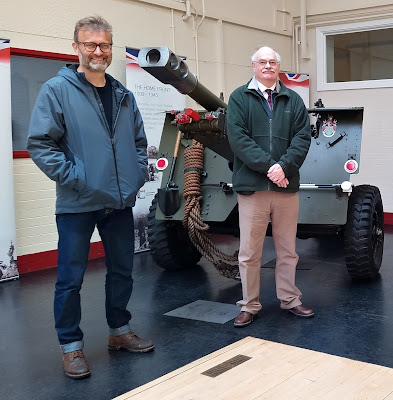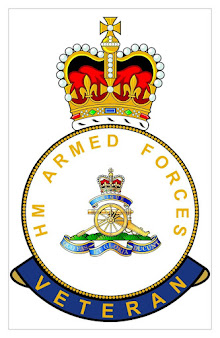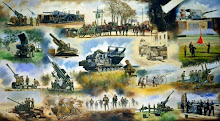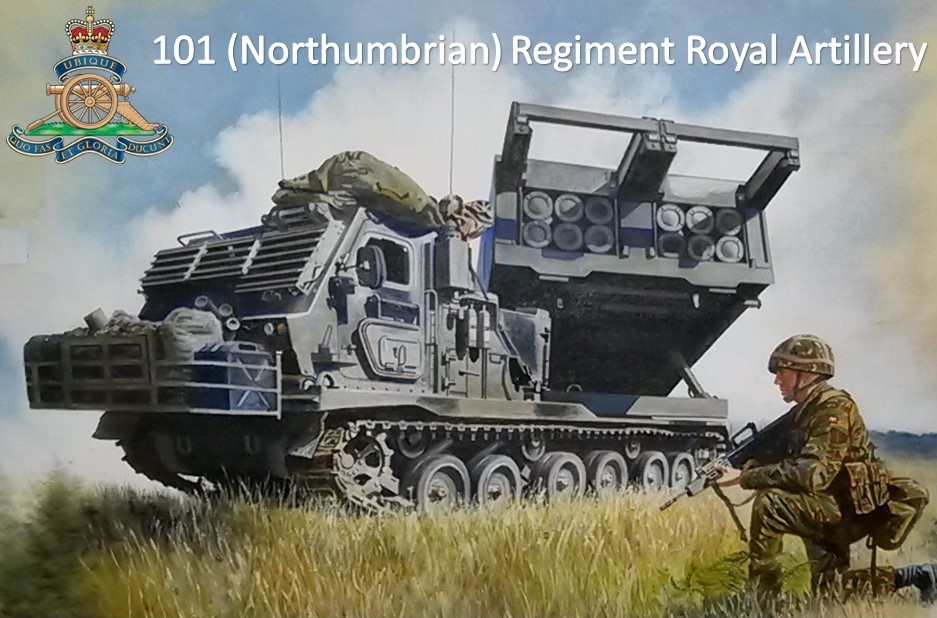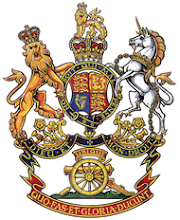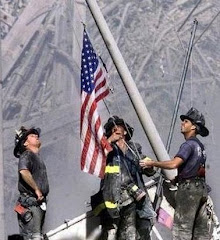Tuesday 21 June 2011
Bombardment of Hartlepool
On December 16th 1914, three German warships attacked towns on the East Coat of England, including Hartlepool. The attack lasted from 8:10am to 8:50 am killing more than 100 people and injuring many more. Hartlepool was defended by guns at the Heugh and Lighthouse Batteries located on the Headland at Hartlepool.
The Gunners of the RGA engaged the German Warships, and it was the only time coastal artillery in the UK were involved in enemy action. Casualties included the first serviceman to be killed on British soil in WW1 and two Gunners from the Durham RGA.
 |
| Bombardment of Hartlepool Light House Battery 16th December 1914 |
The three German ships were the battle cruisers Seydlitz and Moltke, and the older, armoured cruiser, Blucher. They had much larger guns than the defending guns on the Hartlepool Batteries. The warships fired 1150 shells (some up to 11 in., or 27 cm, in diameter) into the Hartlepools. The two coastal defence batteries on the Heugh managed to return fire with 123 shells, the largest of which was 6 in.(15 cm) in diameter.
The Hartlepool coastline was defended by four destroyers, two light cruisers and a submarine. Two gun batteries defended the towns. The Heugh Battery, originally built in 1859, had two 6-inch guns, which were installed in 1899.
The Lighthouse Battery, built in 1855, was approximately 150 yards (137 m) to the south. It was originally armed with four 64-pounder guns, which were replaced in 1907 by one 6-inch gun. The Batteries were manned by 320 officers and men from the 18th Battalion of the Durham Light Infantry (the PALS), and The Durham Royal Garrison Artillery (the Territorial Army).
Bombardment of Hartlepool
 |
| Cliff Terrace 1914 |
 |
| Cliff Terrace 2011 |
 |
| Moor Terrace 1914 |
 |
| Moor Terrace 2011 |
 |
| Officers and Men of Durham RGA on day of the bombardment |
Durham Royal Garrison Artillery Casualties
By the time the German ships left large areas of the Headland and West Hartlepool had been destroyed. Altogether 127 people were killed as a result of the attack, and another 400 were wounded, some suffering horrific injuries. Included in the casualties were 8 servicemen, 5 from the 18th Battalion DLI, 1 Sapper and Gunners Houston and Spence of the Durham Royal Garrison Artillery.
| Heugh Battery |
| Memorial to first British Soldier killed on British Soil CWGC Private T Jones 18 DLI |
| Gunners Houston and Spence Graves |
| Gunner WS Houston |
(d.16th Dec 1914) Gnr. Houston was killed by a German shell at Heugh Battery whilst acting as a stretcher barer along with Gnr Spence, attempting to rescue those men wounded by the first shell of the Bombardment.
| Gunner R Spence |
(d.16th Dec 1914) Gnr. Spence was killed by a German shell at Heugh Battery whilst acting as a stretcher barer along with Gnr Houston, attempting to rescue those men wounded by the first shell of the Bombardment.
Hartlepool Bombardment Memorials
| Hartlepool Bombardment Memorial Hartlepool Headland |
| Hartllepool Bombardment Memorial |
| War Memorial Hartlepool Headland |
Monday 20 June 2011
Heugh Battery Museum - Hartlepool
The BL 5.5 inch Medium Gun was the first weapon system of 101 (Northumbrian) Regiment and was in use from 1967 to 1980.
The QF 25 pounder saw service in World War Two with Northumbrian Regiments - 72 Regiment, 74 Regiment and 124 Regiment. On the re-constitution of the Territorial Army in 1947, 272 and 274 Regiments were equipped with 25 pounders.
The 3.7-Inch QF AA Gun was Britain's primary heavy anti-aircraft gun during World War II,
The Bofors 40 mm gun is an anti-aircraft autocannon designed by the Swedish defence firm of Bofors. It was one of the most popular medium-weight anti-aircraft systems during World War II, used by most of the western Allies as well as by the Axis forces. The cannon remains in service as of 2011, making it one of the longest-serving artillery pieces of all time. It is often referred to simply as the Bofors gun.
 |
| Heugh Battery Museum |
Artillery Display
 |
| 5.5 inch Gun |
The BL 5.5 inch Medium Gun was the first weapon system of 101 (Northumbrian) Regiment and was in use from 1967 to 1980.
The QF 25 pounder saw service in World War Two with Northumbrian Regiments - 72 Regiment, 74 Regiment and 124 Regiment. On the re-constitution of the Territorial Army in 1947, 272 and 274 Regiments were equipped with 25 pounders.
 |
| 3.7 inch AA Gun |
 |
| Bofors LAA Gun |
World War One Trench Display
 |
| WW1 Trench |
 |
| Soldier in Dugout |
 |
| Regimental Aid Post |
Sunday 12 June 2011
Heugh Battery - Hartlepool
The origins of the Heugh Battery lie in the fear of French invasion in the 1850's. Work on the Heugh Battery to defend the entrance to the Tees began in 1859. The Battery would consist of four large smooth bore guns while a smaller battery for another pair was built next door by the lighthouse. The 68pr guns which had an effective range out to a mile and a half were first manned by the Militia Artillery and later by a detachment of Volunteers raised in the town.
In 1900 it was decided to rebuild the Battery and install two 6 inch Mk VII guns. Gun emplacements, underground magazines and a rangefinder post were built in concrete, much of which can be seen in the restored Battery.
The Battery was initially manned by the local militia and Volunteers. On the formation of the Territorial Force in 1908, the Battery was manned by the Durham Royal Garrison Artillery.
The First World War commended on the 4th August 1914, and the Durham RGA were mobilised to man the Guns defending the Tees. On the 16th December 1914, the Germans bombarded towns on the North East Coast, including Hartlepool. The Gunners of the RGA engaged the 3 German Battle cruisers shelling the town, and became the only Coastal Defence unit to directly engage the enemy during WW1.
As the Royal Navy gained dominance in the North Sea, the role of the Battery became more of a training role for Batteries going out to the Western Front, Over 2,000 men were trained, and the Durham RGA formed 11 Siege Batteries.
Following the First World . War, defences were run down, and in 1936, the Heugh and adjacent Lighthouse Battery were combined. The units manning the defences consisted of Durham Heavy Regiment, R.A. (T.A.) HQ, 174th, 187th Btys: Hartlepool .The Heugh Battery remained a two gun site. On the outbreak of war in 1939, the Battery became the core of Hartlepools coastal defences. In 1941, the emplacements were completely rebuilt for 6 inch Mk 24 dual purpose Coast Defence Anti Aircraft guns. These guns would not fire in anger in WW2. As the threat to the coast started to subside, the Battery was mothballed in 1944, it would remain so until the re-constitution of the Territorial Army in 1947.
On the reconstitution of the TA , t he coastal defence units were 426 Coast Regiment and 427 Coast Regiment. In 1956, Coastal Artillery was disbanded and the Battery was dismantled.
The location was abandoned until 2000, when the Heugh Battery Trust was formed to preserve the Battery.
 |
| Heugh Battery Shortly after completion in 1859 |
 |
| Muzzle Loader Heugh Battery |
In 1900 it was decided to rebuild the Battery and install two 6 inch Mk VII guns. Gun emplacements, underground magazines and a rangefinder post were built in concrete, much of which can be seen in the restored Battery.
 |
| Heugh Battery circa 1900 |
 |
| 6 inch Gun and Battery Command Post Lighthouse Battery to the rear |
The First World War commended on the 4th August 1914, and the Durham RGA were mobilised to man the Guns defending the Tees. On the 16th December 1914, the Germans bombarded towns on the North East Coast, including Hartlepool. The Gunners of the RGA engaged the 3 German Battle cruisers shelling the town, and became the only Coastal Defence unit to directly engage the enemy during WW1.
As the Royal Navy gained dominance in the North Sea, the role of the Battery became more of a training role for Batteries going out to the Western Front, Over 2,000 men were trained, and the Durham RGA formed 11 Siege Batteries.
Following the First World . War, defences were run down, and in 1936, the Heugh and adjacent Lighthouse Battery were combined. The units manning the defences consisted of Durham Heavy Regiment, R.A. (T.A.) HQ, 174th, 187th Btys: Hartlepool .The Heugh Battery remained a two gun site. On the outbreak of war in 1939, the Battery became the core of Hartlepools coastal defences. In 1941, the emplacements were completely rebuilt for 6 inch Mk 24 dual purpose Coast Defence Anti Aircraft guns. These guns would not fire in anger in WW2. As the threat to the coast started to subside, the Battery was mothballed in 1944, it would remain so until the re-constitution of the Territorial Army in 1947.
On the reconstitution of the TA , t he coastal defence units were 426 Coast Regiment and 427 Coast Regiment. In 1956, Coastal Artillery was disbanded and the Battery was dismantled.
 |
| Heugh Battery 1960.s - Guns removed |
The location was abandoned until 2000, when the Heugh Battery Trust was formed to preserve the Battery.
 |
| 6ich Naval Gun Emplacements |
 |
| 6 inch Naval Gun |
 |
| Depression Range Finder in Battery Command Post |
Lighthouse Battery
The Lighthouse Battery, built in 1855, was approximately 150 yards (137 m) to the south. It was originally armed with four 64-pounder guns, which were replaced in 1907 by one 6-inch gun.
 |
| Lighthouse Battery c 1910 |
| Lighthouse Battery site |
Subscribe to:
Posts (Atom)







